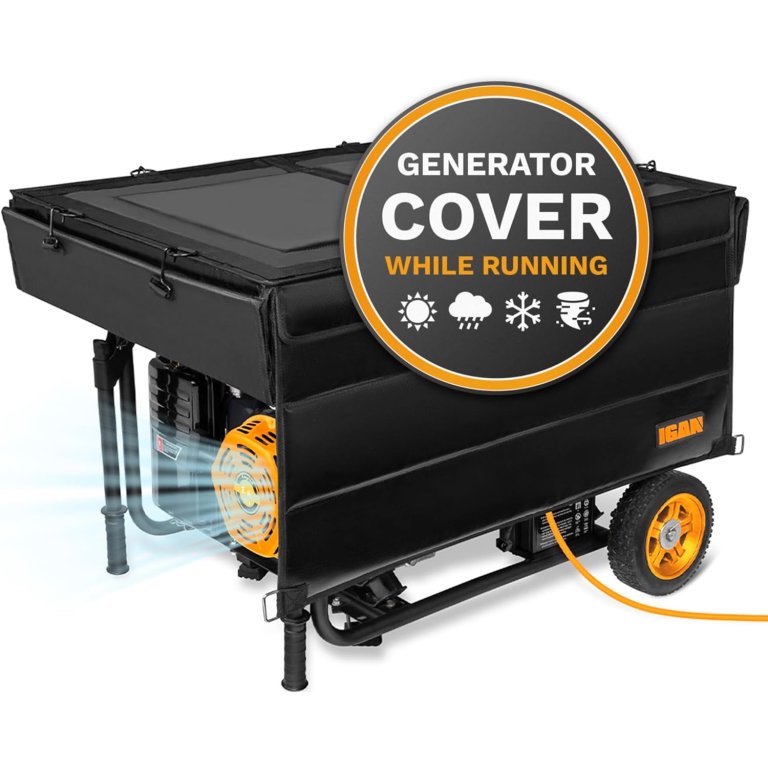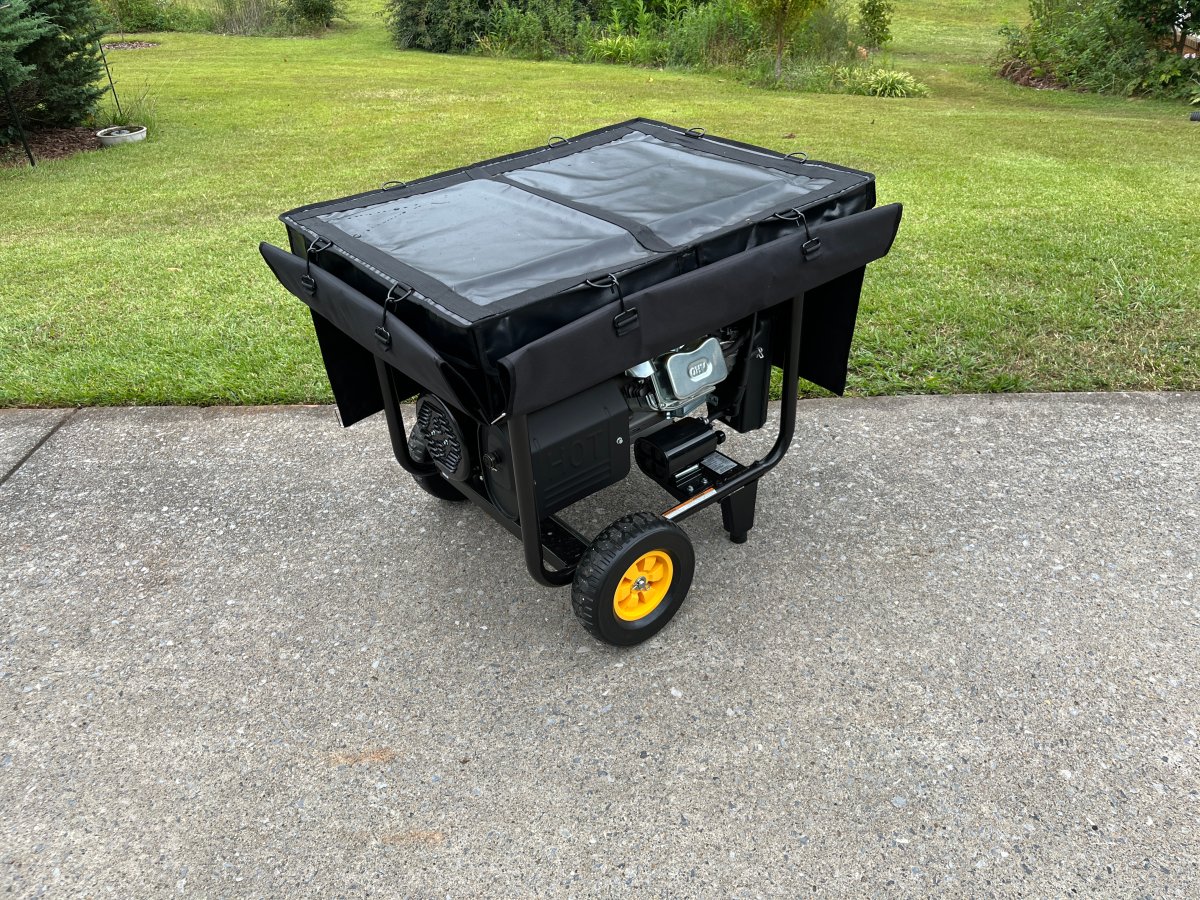
We may earn revenue from the products available on this page and participate in affiliate programs. Learn More ›
When stormy weather blows in, a dependable generator offers peace of mind, and a good generator cover is practically a must-have. In lieu of a shed or other outdoor generator enclosure, a generator cover offers an affordable way to keep rain, snow, dust, and debris out of the engine, and it minimizes the effects of sun exposure on sensitive components. According to Occupational Safety and Health Administration (OSHA) guidance, portable generators should never be used in wet conditions. So when you need to run a generator in the rain, a running cover can ensure safer operation by protecting the electrical outlets from the elements. Plus, some covers offer the dual benefits of protecting the generator during storage by keeping it clean and dry, and providing a safe cover for use when the generator is running.
To identify the best all-purpose cover, we used an 8,000-watt portable gas generator to test four different generator covers during a stretch of rainy, windy weather. The Igan Ultra Heavy-Duty Generator Tent Running Cover turned out to be our favorite. Unlike basic storage covers, there is no need to remove this generator cover while running the engine. It features a sturdy design that is easy to install, fits a wide range of open-frame generator sizes, and converts from a storage cover to a running cover in seconds. In this review, we’ll explain how the Igan cover performed during testing, highlight some other good options, and share the criteria we used to choose and test the best generator covers on the market.
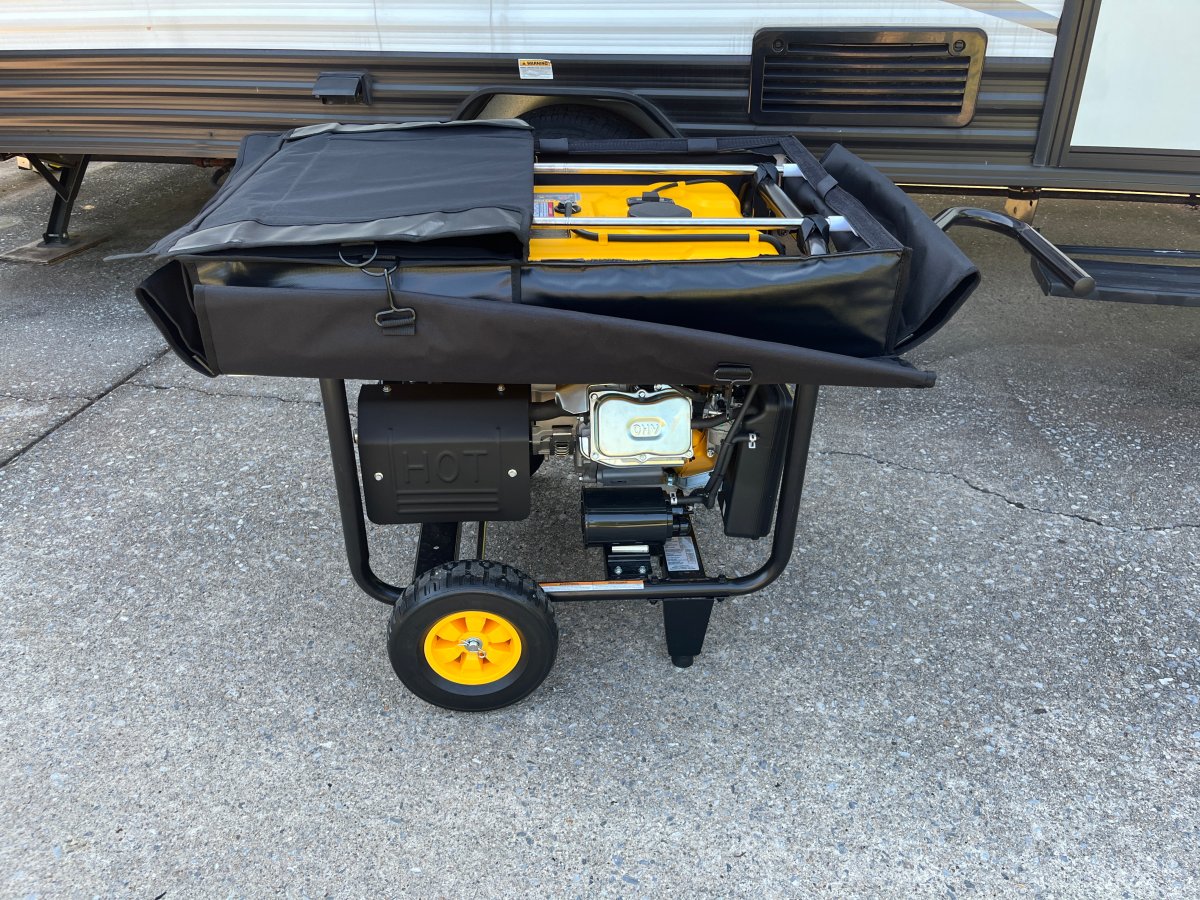
| Testing Stats | |
|---|---|
| Products tested | 4 |
| Time spent testing | 4 hours |
| Tests performed | 3 |
| Price range | $30 to $160 |
Best Overall
Igan Ultra Heavy-Duty Generator Tent Running Cover
What We Like
- Compatible with various generator sizes and configurations
- Offers heavy-duty protection during operation and while in storage
- Easy to refuel the generator without removing cover
- Durable materials and construction
What We Don’t Like
- Not compatible with closed-frame/inverter generators
Product Specs
- Type: Storage and running
- Material: Stainless steel frame, heavy-duty vinyl cover
- Dimensions: 18.5 inches high by 33 inches long by 25.5 inches wide
Our Ratings: Ease of Use 4.5/5; Fit 5/5; Weatherproofing 5/5; Durability 5/5; Value 4.5/5
We liked the Igan generator cover best of all because it provided excellent all-around protection. The stainless steel frame and heavy-duty ultraviolet-protected vinyl tarp offer reliable protection against water and dust while the generator is stored outdoors. Raise three side flaps and the generator can operate safely in rain, snow, or high winds with effective coverage over the electrical outlets. The Igan cover is compatible with most open-frame generators between 3,500 watts and 12,000 watts.
This cover’s tool-free installation made it easy to set up. The frame uses friction-fit into nylon corner moldings and short sections of steel tubing that thread together. The frame was anchored to the generator frame with hook-and-loop straps. The side panels arrived preassembled as a single unit that fit perfectly over the steel frame, secured by eight Velcro straps. Finally, the top panel was attached to the side panel assembly with a Velcro perimeter strip. The material quality, fit, and finish were excellent. The design accommodated our generator’s fold-down handle and wheels, and the top panel featured a creased centerline that allowed us to raise the end over the fuel tank for easy filling.
During the test, a 2-hour thunderstorm blew through with 25 mile-per-hour wind and 2.5 inches of rain. With the side panels down and the corners secured, the generator stayed completely dry. In operation, we were happy to note zero problems with the generator’s carbon monoxide auto shutoff. The generator operated normally, but with the added protection of the weather flap over the electrical panel.
Both of the generator running covers we tested were equipped with high-quality vinyl covers, so the major difference was in the framework. The Igan cover was simpler and easier to install, worked with a wider range of generator sizes, and seemed to hold more securely in place. Secured directly to the top of the generator frame, the cover frame stayed put. Drop-down side panels allowed easy access to operate the generator, check the oil, charge the battery, and perform routine maintenance without removing the cover. Reinforced corners and Velcro corner straps ensured that the cover held snug during bad weather, and sturdy metal hooks and rings made it easy to raise the sides when needed.
Get the Igan generator cover at Amazon or Igan.
More Generator Covers Worth Your Money
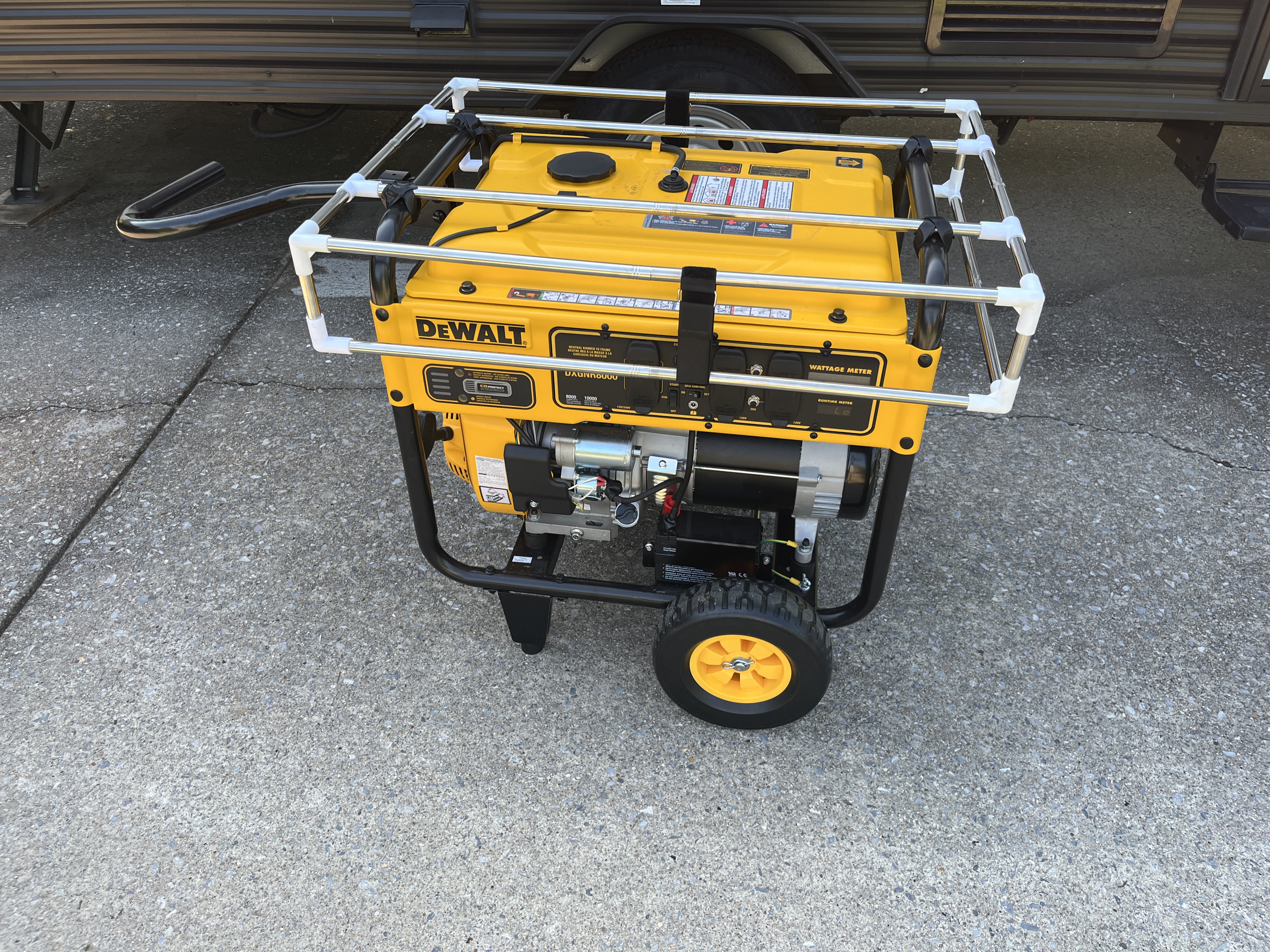
The other products we tested—a running cover and two storage covers—were high-quality products as well. If you need a cover that can withstand heavy snow loads, or you simply want an inexpensive storage cover, one of these could be right for you.
- GenTent 10k Generator Running Cover, available at Amazon, Lowe’s, or The Home Depot.
- Westinghouse WGen Generator Cover, available at Amazon, The Home Depot, or Power Equipment Direct.
- Porch Shield Waterproof Universal Generator Cover, available at Amazon or Tiny Home Equipment.
How We Tested the Best Generator Covers
Understanding that readers need either a storage cover, a running cover, or a combination storage and running cover, we identified four highly rated products for testing. We tested each cover on the same 8,000-watt external frame portable gas generator, with frame dimensions 23 inches high by 27.5 inches long by 20.5 inches wide. In addition to the material quality of the covers, we wanted to evaluate the fit and test them for performance in bad weather. For the test, we secured the covers to the generator according to manufacturer instructions, exposed it to the elements for a week, and inspected the generator for water or dirt intrusion and the cover for wear and tear. We also tested the running covers to ensure that the outlets would remain covered in wet and windy weather, and that the generator could operate freely without tripping the carbon monoxide safety shutoff.
What to Consider When Choosing a Generator Cover
When looking through generator cover models, deciding whether to go with a simple storage cover or a more advanced model that protects the generator while it’s in operation is an important decision. Learn more about these two different types of generator covers, as well as other important factors, such as material, size, and functionality.
Types of Generator Covers
Generator covers come in a surprisingly wide variety of types. Choosing the right one is key to ensuring it protects the generator it’s paired with without impeding its operation.
There are two basic types of generator covers:
- Storage covers are only for protecting the generator when it is not in use.
- Operational covers protect the generator while it’s running.
Both storage and operational covers are designed for either open-frame generators or closed-frame generators. Closed-frame generators have a housing that surrounds the generator motor and its other internal working parts, whereas an open-frame generator’s internal parts are exposed to the elements.
While most covers specify which type of generator they are compatible with, they also have unique characteristics that make them easy to tell apart. For example, most enclosed inverter generator covers are more form-fitting to accommodate the rounded shape unique to an inverter generator, whereas open-frame generator covers are typically boxier to fit around the cube-shaped frame that surrounds an open-frame generator. This style of cover typically has Velcro straps that hold the cover securely to the metal tubes that make up the generator’s frame.
Size, Coverage, and Frame
Size is key to purchasing the right cover for a generator to ensure it’s easy to use and store. A good cover will protect the generator without negatively impacting its operation. While a storage cover should fit snugly to the generator, an operating cover’s frame should fit over the generator with enough space on all sides to allow for adequate airflow to prevent overheating and vent exhaust. With this in mind, a generator cover should be 2 to 3 inches larger than the generator’s dimensions.
Generator covers vary in coverage. A storage cover should enclose the entire generator from top to bottom to adequately protect it from the elements. An operating cover will function more like a tent, covering the generator while leaving a significant amount of space between the cover and the generator to allow for airflow. This style of cover typically has a retractable skirt that stays in place when the generator is in storage and retracts to allow for adequate airflow for exhaust and intake while the generator is operating.
Material
For a generator cover to be effective, it must consist of waterproof material that’s durable enough to withstand the elements without tearing or blowing loose. Tarpaulin, polyester, nylon, and vinyl are good generator-cover materials.
Many storage covers are made of 600-denier polyester, which resists tearing and can endure ultraviolet rays. Polyester storage covers are typically lined with PVC or some other water barrier that makes the cover waterproof. However, vinyl is an attractive option for operational covers as it has fire-retardant characteristics. Furthermore, tarpaulin is durable and naturally waterproof.
The generator’s frame material is crucial to how well the cover holds up to strong winds or even the weight of snow. The best generator covers use stainless steel poles that won’t rust or corrode and are strong enough to withstand foul weather.
Ventilation
Ventilation is key to an effective generator cover. An operational cover should have openings that permit air to flow around the generator and allow the engine’s intake and exhaust to work properly. The cover should protect the generator but also provide enough ventilation to prevent it from overheating during operation or collecting condensation when in storage.
Many operational covers have side panels that can be pulled up when the generator is running and lowered for maximum protection when the generator is not in use. Storage covers should have vents that prevent condensation from forming inside the cover, which could cause corrosion and rust.
Installation and Functionality
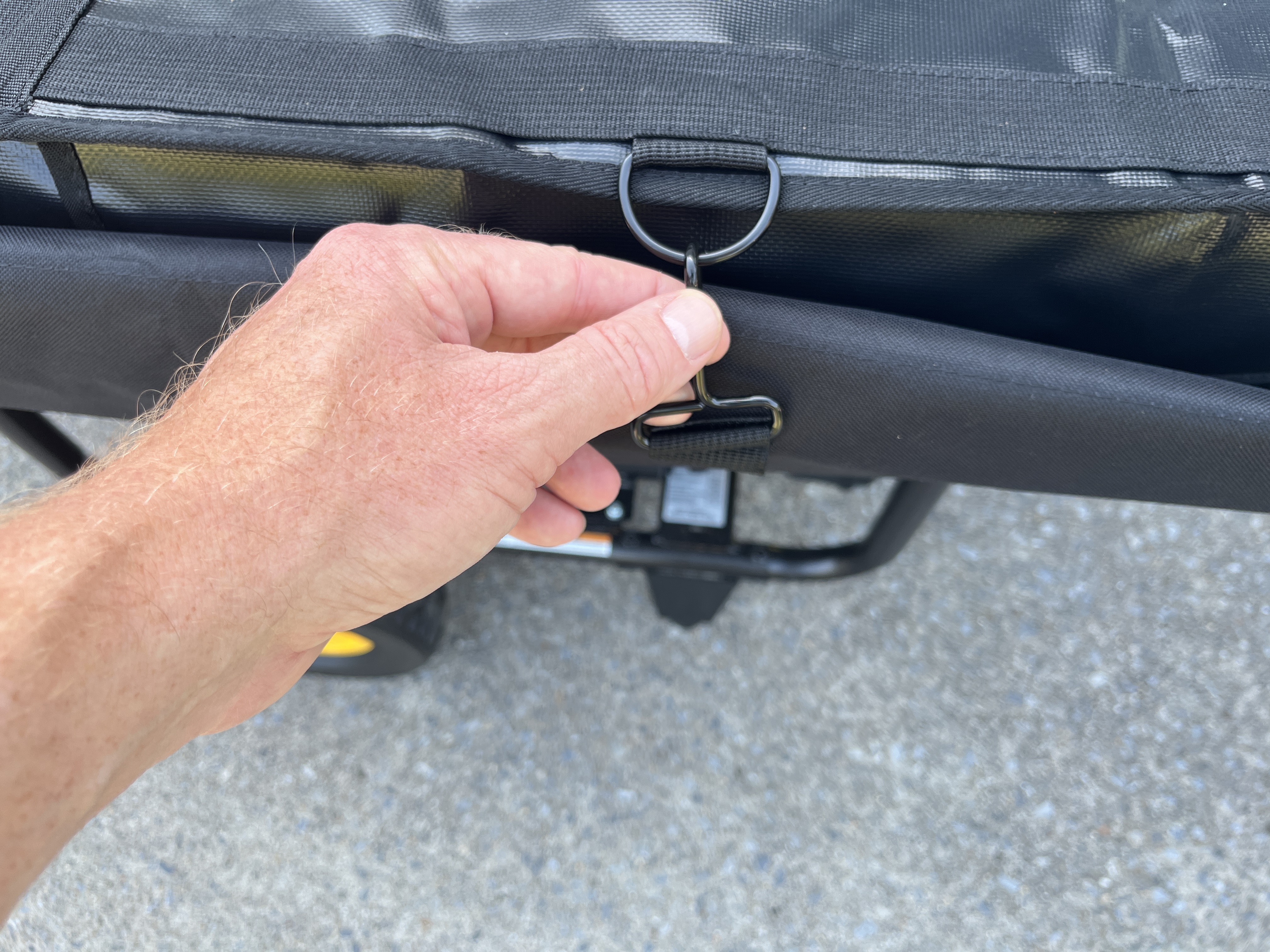
Generator covers are used to protect the generator from foul weather. Many operational covers are designed for permanent installation so that you don’t have to worry about attaching the cover every time inclement weather approaches. An operational cover should protect the generator, but it should also allow you to operate it without removing the cover. This means the generator’s control panel should remain accessible after installation.
Most storage covers have plastic buckles that allow you to install them in seconds. Many also feature flaps that open to allow access to the generator’s handle, enabling the user to move the generator without having to remove the cover.
FAQs
If you’re wondering if a generator cover is really necessary, or how to use one properly, then read on for some of the most commonly asked questions about these products.
That depends. If you store your generator in a garage or shed when not in use, then a generator cover may not be necessary. However, if your generator lives outdoors, then a generator cover is necessary to protect it from rain that can cause rust and corrosion, which could dramatically shorten its life and prevent it from operating in an outage.
Yes. Covering the generator protects it from dust, debris, and water when not in use. Doing so also protects sensitive components from water damage, and you from electric shock, while operating in inclement weather. It can also reduce the need for maintenance.
Though not as crucial as covering a generator that lives outdoors, protecting a portable generator that is stored in a shed or garage with a portable generator cover is still a good idea as it will protect it from dust and dirt that can potentially damage it.
Only if you purchase a generator cover that is specially designed to cover the generator while it is running. Do not attempt to put a storage cover on a generator that is running.
That depends. A storage generator cover is meant to protect a nonrunning generator while it’s in storage; if the cover is used on a running generator, it could pose a fire hazard. An operational cover, which is designed for use while a generator is running, typically consists of fire-retardant materials and has a wide buffer between the cover material and the generator.
It is not safe to store a generator inside the home, but storing it in a garage, shed, or a special enclosure for a generator is a good idea. If outdoor storage is the only option, using a generator cover is especially important.
Water and electricity do not mix. If you must use your generator in the rain, avoid the risk of electric shock by using a generator running cover or other outdoor generator enclosure.
Beware of the risk of carbon monoxide poisoning. Before operating a generator, be sure to place it a minimum of 20 feet away from any doors, windows, or vents, with the exhaust facing away from the home.
Meet the Tester
Mark Wolfe is a writer with an extensive background in the green industry, and an avid DIYer who lives in a 50-year-old home. When he isn’t writing, he spends his time upgrading, repairing, and replacing anything and everything in his home, yard, and garden. He tests and writes reviews about hand tools, outdoor power equipment, home repair products, and outdoor living goods.
Additional research provided by Tony Carrick

